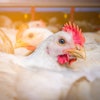Whether we like it or not, the rising cost of animal welfare and “protecting the environment” is becoming as important to pig producers as feed and fuel prices.
Governments and consumers all over the globe are becoming more vociferous in their demands than ever before – and they are unlikely to be silenced as retailers see new marketing opportunities in “welfare friendly” food and “eco-products.”
Forgetting national differences
It makes sense, that as welfare and environmental standards between competitors across northeastern Europe narrow, pig producers should start to forget their national differences and work together to improve systems and performance. So they can stand confidently in the face of growing competition from producers in other new pig producing regions, such as Asia and Latin America.
After all, size does matter when it comes to negotiating prices in today’s increasingly crowded marketplace. Pig producers in France, Germany, the Netherlands, Denmark and the United Kingdom could enhance their opportunities, if they worked together to sell pig meat both locally and abroad. This would give them more muscle when it came down to the final negotiations over price per kilogram.
A move in this direction already appears to be underway in Europe, with a growing number of cross-border “consolidations” and “acquisitions,” between companies. Denmark is leading the way by buying into markets in Germany and the UK, in particular, and fine-tuning its welfare standards to meet demands of all the different markets. Under current international economic conditions, this looks set to continue.
Strength in numbers
A significant number of pig producers are already showing the way forward by putting aside traditional differences and talking to producers in different countries. Therefore, we have farmers in Denmark, Holland and the United Kingdom talking to each other and sharing experiences to help each other progress and meet the challenges they all face in Europe.
French and German pig producers also are joining these discussions and cross-border visits. They are building up bonds that could one day lead to the establishment of a Northeast Europe Cooperative that would provide all of them with the voice and muscle needed when talking to the EU authorities, supermarket giants and other customers, as well as when shopping around for feed, fuel and other inputs.
In addition, a strong Northeast European Coop could help Europeans compete more effectively against the U.S. and Brazil to obtain a larger share of the new export markets opening up in Asia and Africa.
This body could also help the European pig industry argue more persuasively for the need for governments and other institutions to devote more time and money to research and development, which is so essential to ensure the sustainability of the sector.
The need to share knowledge and expertise to ensure the survival of both the European pig sector and the global industry has already been highlighted in what is recognized by many as a global marketplace for pig meat.
InterPIG leads the way
We have InterPIG, an internationally respected group of pig production economists who regularly exchange information about pig production in participating countries and provide a much-respected annual production cost comparison. This group was launched in Europe in 2003 and includes economists from France, Denmark, Belgium, the UK, Germany, Holland, Ireland, Sweden, Austria and Spain, as well as the U.S., Canada and Brazil.
They all exchange information about developments in the countries concerning legislation and market, structure of the pig sector, as well as data concerning productivity and cost.
Many pig breeding and equipment companies have worldwide interests and, as we report in this issue, one pre-eminent geneticist, Dr Grant Walling, suggests that the West should start thinking about investing its knowledge and technology in the emerging pig production economies of China and Brazil, for example, to help satisfy the growing demand for protein.
“We cannot carry on doing what we are doing. There are too many constraints – biological, environmental and legislative. Instead, we will have to invest our technology in these new industries and share our knowledge and expertise,” said Dr Walling.
“If countries like China, Russia and Brazil could achieve UK performance (for example), they could collectively increase output by at least 60%. On global scale, that represents a 32.3% increase in world pork supplies, a significant contribution,” he adds.
If Dr Walling is right, the international pig industry cannot carry on what it has been doing, if it wants to continue to thrive. Producers and our allied industries need to work together on a more permanent basis – and greater cooperation between pig producers and the other links of the production supply chain could be just the first step.

















